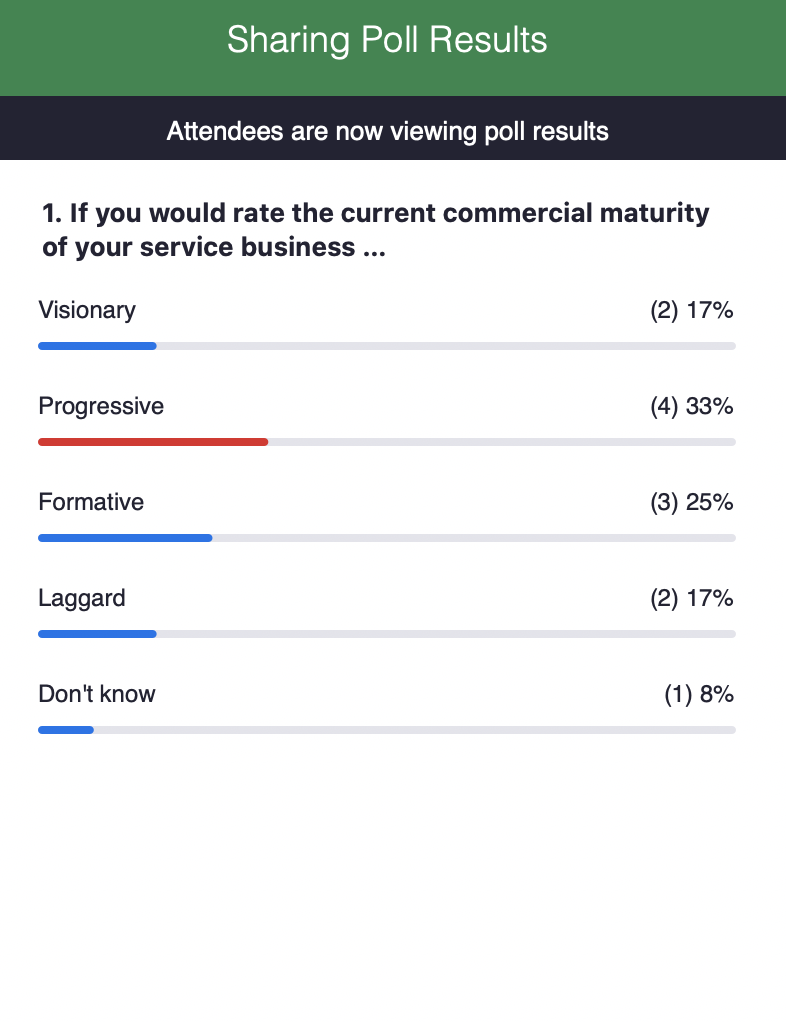For a couple of years now, I’ve been writing about the convergence of Sales and Service. Service, with all its touchpoints during the operational life cycle of a product, has a tremendous capacity for value creation. To reap that value, Service needs a little more Sales DNA. Likewise, Sales needs a little more heart for Service. With a shift from revenue contribution to margin contribution, we see Sales ‘taking over’ the Service Revenue agenda.
You Now Report into Sales
A true story. I’ve had extensive experience running service departments. In all those years my main objectives were focused on service delivery and operational excellence. Over time, I saw an increased interest in service margin and service revenue. When my former organization updated my business objectives with a service revenue target, that goal came as part of a package deal: “you now report into Sales.”
Initially, I did not understand how reporting into Service or Sales when having a service revenue target would make a difference. At that time, the prevailing current was that revenue generation was the prerogative of Sales. Service was seen as a delivery engine focussed on operational gain.
Over the years, I’ve witnessed a dynamic between Sales and Service when it comes to the ‘claiming’ of business case benefits. Lately, a CEO put the reasoning into works while we presented the business benefits of a digital and service transformation project to his executive team. The CEO attributed productivity and cost savings to operations and service. He associated revenue targets with sales. When our business case showed significant revenue benefits through improving installed base visibility and attach rates, sales were the first to claim credits and ownership. For sales, these two improvements translate into touchpoints and conversion. This duo is the bread-and-butter of the sales process.
Bridging Sales and Service
Though sales leaders may be taking over the revenue growth agenda, we all know there is a huge difference between selling products and selling services. The engagement model is different. The buyer role is different. The appraisal of Capex versus Opex has a different impact on decision-making, etc. Most of all, it’s a simple numbers game. Sales revenue is big numbers, service revenue is smaller numbers: Guess who will be seen as the hero?
Any CFO can tell you that services, despite carrying a lower revenue amount, often have a significantly higher margin contribution. What if we were to start incentivizing salespeople with a margin contribution target rather than a revenue target? Great idea? Too radical? Maybe such a move could swing the pendulum in the opposite direction. If all your salespeople were selling services, you would forget you need an initial product sale to make the model work.
So we are back to an earlier blog post I wrote about the importance of Sales and Service Working in Collaboration. The initial product sale is like an ‘entry ticket’ to selling adjacent services. Using the analogy of a theme park, say Universal Studios or Legoland, once you are inside and start spending money, that’s where the EBIT is made. It is the achievement of ticket sales to get you inside. It is the effort of the entertainers to keep you inside as long as possible…and spend money. Are both roles different? Yes. Is one role more important than the other? No.
Building a Portfolio of Lifecycle Revenue Generators
We can transpose the analogy of a theme park to the world products and services by illustrating two common situations:
- Product sales over-promises: Making it hard(er) for service to sell attached services. In effect, you’re trading high-margin contribution activities for a lower margin contribution.
- Services portfolio not appealing enough: Making it hard(er) to generate service revenue and providing customers with reasons to churn.
Both examples should compel any product/services company to rethink their revenue generation and margin contribution ‘building blocks.
More and more sales leaders are understanding that revenue generation spans the entire lifecycle of the sold product. The realization that the post-sales value proposition has a symbiotic relationship with the pre-sales value proposition, triggers sales leaders to claim control of the services portfolio and the lifecycle go-to-market strategy.
Now you are thinking: is this the job description of a Chief Revenue Officer (CRO)? Yes, you are close. When a buyer applies a concept like total cost of ownership (TCO) in weighing a purchase, then the response on the sales side converges in the responsibilities of a CRO.
Is it bad for Service when Sales leaders are taking over? I believe not. I think Sales and Service have different but complementary skills to drive the revenue growth agenda. Sales DNA finds Service Heart!
This article is published in Diginomica on June 9th, 2021 and ServiceMax Field Service Digital on June 17th, 2021



